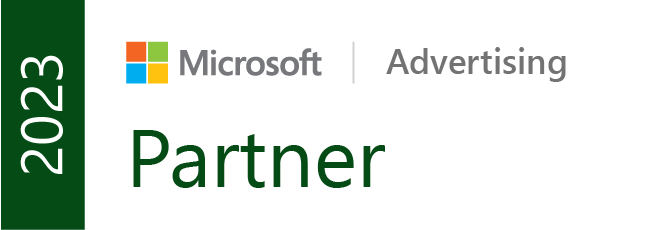ASCRS 2024: Top 10 Takeaways
Healthcare Marketing Perspectives From The Field
To paraphrase an old advertising slogan, neither rain, nor sleet, nor wind, nor snow would keep the American Society of Cataract and Refractive Surgeons (ASCRS) Annual Congress down.
ASCRS just ended in Boston and despite the cold weather, the meeting itself was as dynamic as ever. Schaefer was there in full-force to support the great relationships we’ve built and to make new connections.
As we walked the show floor, interacted with countless professionals and navigated the all-important ad hoc gatherings after hours, we did what we love to do. We observed, questioned, debated and thought about strategic direction and how it can help our clients succeed.
We wanted to share our top 10 takeaways from 2024 ASCRS for those of you in ophthalmology. (For our non-ophthalmology clients, we’ll suggest ways these observations may impact you):

1. The anterior segment is getting crowded
From the cornea to the cataract, there continues to be an inspiring number of innovations in this space. That comes with a second edge: competition — especially in glaucoma — is more fierce than ever.
If you’re not in eye care, are there areas in your market that are equally crowded? What is your vision for differentiation?
2. PCIOLs are seeking narrower slices of blue sky
Entering the IOL market as a challenger requires defining a thinner slice of uniqueness than ever before. That said, the adjustable lenses being launched are very distinct and it will be interesting to see what effect this has on the market going forward.
3. Posterior segment energy
Where the anterior segment is approaching saturation, judging by the energy of innovation in Eyecelerator and other sidebar conversations, there seems to be a lot of momentum growing in the posterior segment. As the population ages and retinal procedures grow more prevalent, the industry is clearly positioned to deliver meaningful options.
You non-ophthalmology friends, where does your category present blue ocean possibilities?
4. Corneal health concentration
It’s always been important for ophthalmology, but the attention paid to corneal health devices and products seemed greater in 2024. Osmolarity (looking at you trukera-medical), inflammation, dry eye and regenerative products are just scratching the surface (pardon the pun) of what Schaefer saw.
5. Meeting momentum
A purely anecdotal observation, but the exhibit space seemed less extensive than in years past. That being said, the overall energy at ASCRS was extremely healthy! With less outward activity emanating from the show floor this year we can only imagine what was being discussed behind the curtain and in the sidebar meetings. The anticipation of what’s coming has us ready for a wave of innovation and launches in 2025.
6. Inclusion emphasis
With the evolution in the industry’s gender balance continuing to shift (one booth even celebrated “the women of ophthalmology”) and ASOA’s vital diversity workshop, ASCRS is making worthy strides. The journey is still long but the trend is moving in the right direction.
How is your industry evolving if you’re not in ophthalmology? Where can it improve?
7. Goodbye sea of blue
We’re an advertising agency. We have to speak to the design trends we saw. After all, the battle to stand out is won and lost, in part, with good design. We definitely saw the rise of purple. And, there are a lot more companies using gradients in their designs.
8. Surprises in small places
It’s always fascinating to see what the big exhibitors do, but often there is a gravitational pull with the smaller spaces, too.
We’re biased, but our friends at ViaLase made a savvy decision to place their booth across from the conference “Tap Room.” The innovation they showcased and the arresting booth design (humble brag) kept that space hopping all weekend long.
Beyond a self-serving ViaLase plug, we also saw inspiration in any number of small spaces like Nordic Pharmaceuticals’ booth the ASCRS 50th anniversary celebration via a booth replicating a practice from 1974 (thanks in part to our friends at Alcon) and the fascinating startup technologies in AI-driven practice management tools.
Are you not an eye-care company but still a challenger brand? How do you use small spaces to make a big impression?
9. Access is no longer an afterthought
Reimbursement is more important than ever. And it showed in both overt and covert ways. The most successful products and product managers will consider strategies around access and the value story in conjunction with all other components of their business plans.
This is undoubtedly true beyond the ophthalmic space. Where is your industry finding success with this vital healthcare commercialization need?
10. Visualization sophistication
If this ASCRS is any indication, the profession is in for some meaningful transformation in the next few years. The adage that you can’t treat what you can’t see may need to be updated. You can see more than ever, now what should you treat?
The thread running through all of this — both the experience of the meeting as well as the takeaways — is that connecting as humans is what matters. The ophthalmic industry is a collection of amazing thinkers making a meaningful difference in patients’ lives. But it doesn’t happen if we don’t connect. At Schaefer, we’re proudly not healthcare specialists, we’re human specialists. We know how to find an emotional resonance that connects people with people, and that’s what makes life better.
If you’d like to put that perspective to work for your brand, drop me a line!





